Search Results
Fine Jewelry University Articles matching: “platinum ring”
Showing only FJU Article results. Click here to show all results.
Fine Jewelry University (Show All FJU Articles)
-
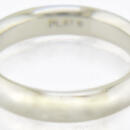
Platinum
… a platinum engagement ring needs the care and attention it deserves especially for its symbolic and sentimental value. Although platinum possesses excellent qualities, it is advisable to follow a few simple steps to help keep your platinum ring looking its best. You should avoid wearing it while doing manual work, at gym or playing sports or while working with abrasive substances. One ought to remember that platinum is not scratch proof. Similarly you should not wear it while …
-
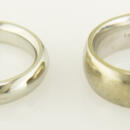
The Difference Between White Gold and Platinum
The first difference between white gold and platinum is the most basic and is the foundation of all the other differences. White gold and platinum are different metals. …alloy. The white color is achieved by a careful choice of the alloying metals, which bleach the yellow of pure gold. Platinum is a naturally white metal. It does not need to be alloyed for color. Jewelry platinum is typically an alloy … usually marked with .900 or .950 to mark its fineness. Some manufacturers state what alloy they are using like 90% Platinum 10% Iridium. How white gold and platinum start out is one of the key differences. White gold even in the best mixture…
-
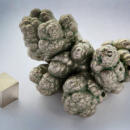
What to Do When Your Ring Irritates Your Skin
… often plated to give it a brighter finish. White gold alloys are often plated with Rhodium which is a member of the Platinum family. People are unlikely to be allergic to Rhodium, but as the plating wears off, irritation can start due to the… for the metal that’s causing the allergic reaction while making the new ring out of a completely different metal. Platinum is hypoallergenic and generally a safe bet for people with allergic reactions to metals. There are also alloys of …
-

Laser Jewelry Repair
… into the hinge and destroying its mobility. Antique filigree that is broken can be repaired. Restoring antique platinum jewelry is now possible with Arden Jewelers’ laser. The laser can also help Angelo create very complicated pieces and …? All the traditional metals can be laser welded, including base metals, karat gold, sterling silver, palladium and platinum, offering a complete array of design, redesigns and repair options. Platinum traditionally is the most difficult …
-
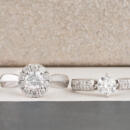
Anatomy of a Ring
… know it was sized looking at the shank with your naked eye. Over time, the shank can wear thin—yes, even gold and platinum can wear away. In such cases a jeweler can “re-shank” the ring by replacing the metal at the bottom of the shank, …Knowing the different parts of a ring can help you make a better decision when choosing a new ring and it can help you know when your ring may need … ring has a shank. This is the technical term for the band of metal that encircles the finger. There would be no ring without the shank. If the ring has a distinct design feature on the top part, the ring shank is generally said to start …
-

Jewelry Repair FAQ
… at risk of falling out of the mounting. Retipping is the process of adding a small amount of metal (usually gold or platinum) to the top of worn down prongs to keep the gemstone secure. In the past, almost all gemstones had to first be …flashing is only about 0.175 microns (or 0.000005 inches) thick. What is Rhodium Plating? Rhodium is a member of the Platinum family of metals, but it is actually whiter and harder than platinum. Rhodium plating is done the same way as gold …
-
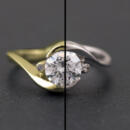
Star White Gold
…When white gold rings are new they are coated with a white metal called rhodium. Rhodium is a metal very similar to platinum and rhodium shares many of the properties of platinum including its white color. The rhodium plating is used to make …years I have been telling my clients about the problem with no real solution. I have an article on white gold versus platinum you can read that explains the issues. But now we have a solution! No Plating, Just Brilliantly White Gold We have …
-
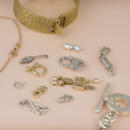
Types of Jewelry Clasps
…production of jewelry, and the demand for simpler, more affordable clasps grew. This led to the development of the spring ring clasp, which is still widely used today. The spring ring clasp features a small, spring-loaded mechanism that …. Other types of jewelry clasps that emerged in the 20th century include the lobster clasp, which features a spring-loaded mechanism that opens and closes by pressing a small lever, and the toggle clasp, which consists of a bar that …
-
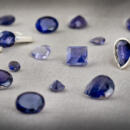
Gem in the Spotlight: Iolite
… different colors when observed at different angles, especially with polarized light. Pleochroism is caused by differing absorption of light rays in doubly refractive crystals. Thus, no singly refractive gemstone can exhibit pleochroism. … than Emerald or Topaz. Because of this, some extra care should be taken with your iolite jewelry. Try to avoid wearing it in situations where it might be hit against hard objects to keep it free from cracks and small chips. Iolite is a …